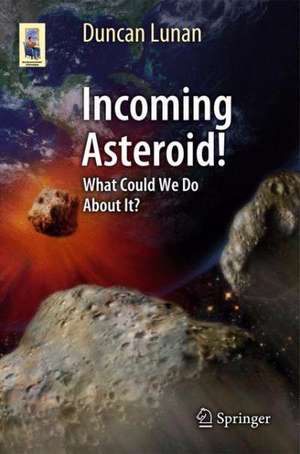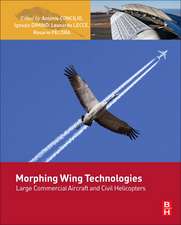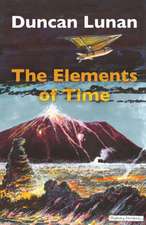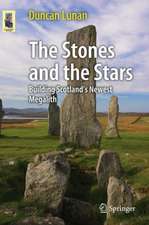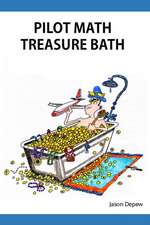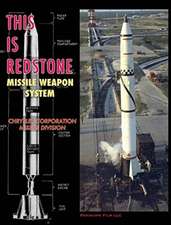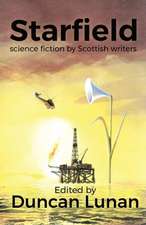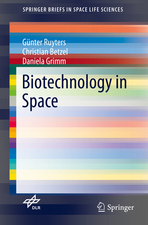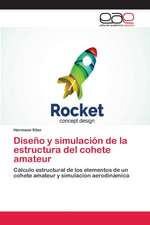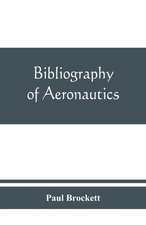Incoming Asteroid!: What Could We Do About It?: Astronomers' Universe
Autor Duncan Lunanen Limba Engleză Paperback – 18 oct 2013
Clearly there are many things humanity can do nothing about, for example an unseen object traveling towards us so fast that we have no time to prepare, or an object so large it may be unstoppable. A realistic hazard model was decided upon, and the scenario developed from that: an incoming object about 1 kilometer in diameter, in an orbit ranging from the outer rim of the Asteroid Belt to within that of Earth’s.
Three basic possibilities are considered in this book. The first is the deflection of the asteroid, using remote probes along with a number of possible technologies to change the asteroid’s course. Second is the attempt of a manned mission, in order to plant a propulsion system on the asteroid to push it into a different orbit. Third is the nuclear option, a last-ditch attempt to break up and then disperse the asteroid using nuclear weapons. (A rather impractical combination of these second and third options were used as the plot of the popular 1998 Bruce Willis feature film, Armageddon.)
Although the cost of developing the technology needed to protect the Earth would be substantial, there would certainly be spin-off benefits. These could eventually result in practical small-scale atomic energy sources, new propulsion systems that could make extraterrestrial mining within the solar system a possibility, and other as-yet unforeseen benefits.
And finally, Incoming Asteroid! considers the political implications - how governments across the world should best react to the threat with a view to minimizing loss of life, and in the weeks running up to the possible impact, preventing panic in the population.
Din seria Astronomers' Universe
-
 Preț: 210.44 lei
Preț: 210.44 lei -
 Preț: 207.15 lei
Preț: 207.15 lei -
 Preț: 195.53 lei
Preț: 195.53 lei -
 Preț: 254.90 lei
Preț: 254.90 lei -
 Preț: 284.56 lei
Preț: 284.56 lei -
 Preț: 212.88 lei
Preț: 212.88 lei -
 Preț: 256.41 lei
Preț: 256.41 lei -
 Preț: 264.35 lei
Preț: 264.35 lei -
 Preț: 259.08 lei
Preț: 259.08 lei -
 Preț: 227.61 lei
Preț: 227.61 lei -
 Preț: 277.98 lei
Preț: 277.98 lei -
 Preț: 305.70 lei
Preț: 305.70 lei -
 Preț: 253.11 lei
Preț: 253.11 lei -
 Preț: 216.60 lei
Preț: 216.60 lei -
 Preț: 272.24 lei
Preț: 272.24 lei -
 Preț: 330.75 lei
Preț: 330.75 lei -
 Preț: 179.00 lei
Preț: 179.00 lei -
 Preț: 289.83 lei
Preț: 289.83 lei -
 Preț: 160.03 lei
Preț: 160.03 lei -
 Preț: 200.80 lei
Preț: 200.80 lei -
 Preț: 255.97 lei
Preț: 255.97 lei -
 Preț: 242.58 lei
Preț: 242.58 lei -
 Preț: 262.55 lei
Preț: 262.55 lei -
 Preț: 282.38 lei
Preț: 282.38 lei -
 Preț: 187.82 lei
Preț: 187.82 lei -
 Preț: 225.19 lei
Preț: 225.19 lei -
 Preț: 207.64 lei
Preț: 207.64 lei -
 Preț: 104.35 lei
Preț: 104.35 lei -
 Preț: 188.94 lei
Preț: 188.94 lei -
 Preț: 270.50 lei
Preț: 270.50 lei -
 Preț: 212.01 lei
Preț: 212.01 lei -
 Preț: 169.08 lei
Preț: 169.08 lei -
 Preț: 210.01 lei
Preț: 210.01 lei -
 Preț: 208.26 lei
Preț: 208.26 lei -
 Preț: 253.98 lei
Preț: 253.98 lei -
 Preț: 180.12 lei
Preț: 180.12 lei -
 Preț: 280.19 lei
Preț: 280.19 lei -
 Preț: 273.13 lei
Preț: 273.13 lei -
 Preț: 207.39 lei
Preț: 207.39 lei -
 Preț: 208.70 lei
Preț: 208.70 lei -
 Preț: 214.86 lei
Preț: 214.86 lei -
 Preț: 188.94 lei
Preț: 188.94 lei -
 Preț: 194.65 lei
Preț: 194.65 lei -
 Preț: 277.34 lei
Preț: 277.34 lei -
 Preț: 187.15 lei
Preț: 187.15 lei -
 Preț: 210.93 lei
Preț: 210.93 lei -
 Preț: 212.01 lei
Preț: 212.01 lei
Preț: 335.76 lei
Nou
Puncte Express: 504
Preț estimativ în valută:
64.27€ • 69.83$ • 54.02£
64.27€ • 69.83$ • 54.02£
Carte tipărită la comandă
Livrare economică 21 aprilie-05 mai
Preluare comenzi: 021 569.72.76
Specificații
ISBN-13: 9781461487487
ISBN-10: 146148748X
Pagini: 308
Ilustrații: XVII, 390 p. 163 illus., 115 illus. in color.
Dimensiuni: 155 x 235 x 20 mm
Greutate: 0.75 kg
Ediția:2014
Editura: Springer
Colecția Springer
Seria Astronomers' Universe
Locul publicării:New York, NY, United States
ISBN-10: 146148748X
Pagini: 308
Ilustrații: XVII, 390 p. 163 illus., 115 illus. in color.
Dimensiuni: 155 x 235 x 20 mm
Greutate: 0.75 kg
Ediția:2014
Editura: Springer
Colecția Springer
Seria Astronomers' Universe
Locul publicării:New York, NY, United States
Public țintă
Popular/generalCuprins
Is There a Danger?.- A Designer Hazard.- Detection and Reaction.- Deflection - The First Scenario.- Second Scenario - Manned Mission.- Final Options.- The Starseeds Grow.- Keep Watching!.
Recenzii
“The book is thoroughly researched, with beautiful historical pictures and spectacular high-res Earth and satellite produced images of comets and asteroids and their marks they left on Earth. The references for each chapter are exhaustive and the index reads like a ‘who is who’ of space explorers and scientists.” (Journal of Space Operations & Communicator, Vol. 4(4), 2017)
“Lunan writes engagingly and has produced a well-illustrated, well-referenced, and highly readable tome. What I enjoyed especially was the multiple references to the works of science-fiction writers on the subject.” (David W. Hughes, The Observatory, Vol. 135 (1245), April, 2015)
“Lunan writes engagingly and has produced a well-illustrated, well-referenced, and highly readable tome. What I enjoyed especially was the multiple references to the works of science-fiction writers on the subject.” (David W. Hughes, The Observatory, Vol. 135 (1245), April, 2015)
Notă biografică
Duncan Lunan is a graduate of Glasgow University in Scotland, an M.A. with Honors in English and Philosophy plus Physics, Astronomy and French, and has a postgraduate Diploma in Education. A full-time author and speaker with emphasis on astronomy, spaceflight and science fiction, his books to date are “Man and the Stars”, “New Worlds for Old”, “Man and the Planets”, “Starfield” (edited), “With Time Comes Concord” and “Children from the Sky”. “The Stones and the Stars, Building Scotland’s Newest Megalith” was published by Springer in November 2012. He has contributed to 24 other books and published over 930 articles and 33 short stories. As Manager of the Glasgow Parks Dept. Astronomy Project, 1978-79, he designed and built the first astronomically aligned stone circle in Britain for over 3000 years, described in “The Stones and the Stars”.
Lunan was a Curator of Airdrie Public Observatory for 18 years, and in 2006-2009 he ran an educational outreach project from the Observatory to schools, funded by the National Lottery. His other interests include ancient and mediaeval history, jazz, folk music and hillwalking. After 30 years in Glasgow he recently returned to his home town of Troon, Ayrshire, where he lives with his wife Linda.
Lunan was a Curator of Airdrie Public Observatory for 18 years, and in 2006-2009 he ran an educational outreach project from the Observatory to schools, funded by the National Lottery. His other interests include ancient and mediaeval history, jazz, folk music and hillwalking. After 30 years in Glasgow he recently returned to his home town of Troon, Ayrshire, where he lives with his wife Linda.
Textul de pe ultima copertă
Lately there have been more and more news stories on objects from space – such as asteroids, comets, and meteors – whizzing past Earth. One even exploded in the atmosphere over a Russian city in 2012, causing real damage and injuries. Impacts are not uncommon in our Solar System, even on Earth, and people are beginning to realize that we must prepare for such an event here on Earth.
What if we knew there was going to be an impact in 10 years’ time? What could we do? It’s not so far in the future that we can ignore the threat, and not so soon that nothing could be done. The author and his colleagues set out to explore how they could turn aside a rock asteroid, one kilometer in diameter, within this 10-year timescale.
Having set themselves this challenge, they identified the steps that might be taken, using technologies that are currently under development or proposed. They considered an unmanned mission, a follow-up manned mission, and a range of final options, along with ways to reduce the worst consequences for humanity if the impact cannot be prevented.
With more warning, the techniques described could be adapted to deal with more severe threats. If successful, they can generate the capability for a much expanded human presence in space thereafter. With the dangers now beginning to be recognized internationally and with major new programs already in motion, the prospects for civilization and humanity, in relation to the danger of impacts, look much more hopeful than they did only a decade ago.
What if we knew there was going to be an impact in 10 years’ time? What could we do? It’s not so far in the future that we can ignore the threat, and not so soon that nothing could be done. The author and his colleagues set out to explore how they could turn aside a rock asteroid, one kilometer in diameter, within this 10-year timescale.
Having set themselves this challenge, they identified the steps that might be taken, using technologies that are currently under development or proposed. They considered an unmanned mission, a follow-up manned mission, and a range of final options, along with ways to reduce the worst consequences for humanity if the impact cannot be prevented.
With more warning, the techniques described could be adapted to deal with more severe threats. If successful, they can generate the capability for a much expanded human presence in space thereafter. With the dangers now beginning to be recognized internationally and with major new programs already in motion, the prospects for civilization and humanity, in relation to the danger of impacts, look much more hopeful than they did only a decade ago.
Caracteristici
Developed from a serious scientific project, this book is based on facts, not just speculation Informs about a possibly imminent threat and the options for how to deal with it Covers asteroids, comets, and all other near-Earth objects Includes supplementary material: sn.pub/extras
